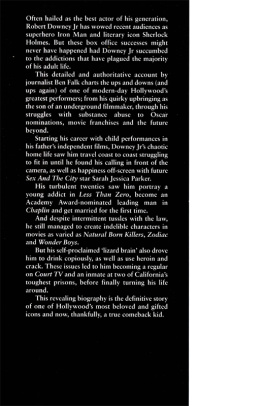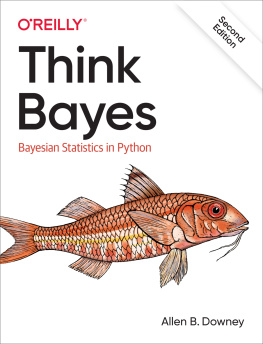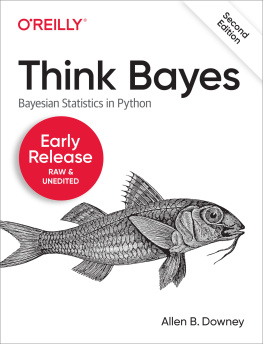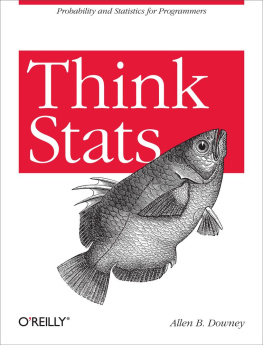Ned Downey - Standard Bidding with SAYC
Here you can read online Ned Downey - Standard Bidding with SAYC full text of the book (entire story) in english for free. Download pdf and epub, get meaning, cover and reviews about this ebook. publisher: Master Point Press, genre: Home and family. Description of the work, (preface) as well as reviews are available. Best literature library LitArk.com created for fans of good reading and offers a wide selection of genres:
Romance novel
Science fiction
Adventure
Detective
Science
History
Home and family
Prose
Art
Politics
Computer
Non-fiction
Religion
Business
Children
Humor
Choose a favorite category and find really read worthwhile books. Enjoy immersion in the world of imagination, feel the emotions of the characters or learn something new for yourself, make an fascinating discovery.
- Book:Standard Bidding with SAYC
- Author:
- Publisher:Master Point Press
- Genre:
- Rating:4 / 5
- Favourites:Add to favourites
- Your mark:
- 80
- 1
- 2
- 3
- 4
- 5
Standard Bidding with SAYC: summary, description and annotation
We offer to read an annotation, description, summary or preface (depends on what the author of the book "Standard Bidding with SAYC" wrote himself). If you haven't found the necessary information about the book — write in the comments, we will try to find it.
Standard Bidding with SAYC — read online for free the complete book (whole text) full work
Below is the text of the book, divided by pages. System saving the place of the last page read, allows you to conveniently read the book "Standard Bidding with SAYC" online for free, without having to search again every time where you left off. Put a bookmark, and you can go to the page where you finished reading at any time.
Font size:
Interval:
Bookmark:
With thanks to the following for their editorial skills and input:
Oliver Ames, Marty Bergen, Gordon Bower, Larry Cohen, John Collins, Kathy Curtis, Fred Gitelman, Mathew Granovetter, John Hoffman, Ron Klinger, Leslie Lombardo, Dave Porter and Alvin Roth.
Their assistance was invaluable, but they should not be blamed in any way for the final outcome.
To the memory of my father, Alex Lefty Pomer, who taught me the love of bridge, basketball and most of all, family.
Ellen
And to the memory of Joyce Downey, a wonderful partner at the table and an even better partner away from the table.
Ned
So, what is SAYC and why are we writing a book about it?
SAYC was developed during the mid-1980s to attract more players to duplicate bridge by providing simple bidding and basic conventions. Its creators felt the need for an easy-to-use system because the trends in Standard American toward five-card majors, limit bids, non-forcing jumps and weak twos had evolved into an array of other systems that the average player could not easily access. Among many, these systems included:
- Precis ion and other forcing club systems.
- Kaplan-Sheinwold with weak notrumps and other gadgets.
- Roth-Stone from the early fifties with the forcing notrump a cornerstone of the Eastern and Western Scientific systems, which were both precursors to the Two Over One system.
- Some disruptive methods of bidding such as forcing passes. These were fondly called Ferts, the short form for fertilizer, and utilized weak openings of 0-7 HCP (high card points) while passing with what we would consider to be a normal opening hand.
According to Charles MacCracken, Manager of the ACBL Tournament Department during the 1980s and now a National Tournament Director, SAYC came out of the WBF World Championships in Miami in 1986. At the time, the Board of Directors had been wrestling with conflicts between the convention experimenters and those who wanted to maintain the status quo. The problem of too many conventions, he said, has been around since the 60s, and is probably still with us.
In March 1987 at the St. Louis North American Bridge Championships, the American Contract Bridge League (ACBL), in keeping with the European No Fear games, where nothing much beyond Stayman and Blackwood were used, introduced a standardized convention card printed on yellow stock. Thus, the Standard American Yellow Card.
But SAYC never really took hold and was approaching an early death by the 1990s. Then came the explosion of personal computers and with it, online bridge. SAYC was born again! The Bridge Pro Tour, a series of competitions with monetary prizes held at various locations in the United States, uses the Standard American Yellow Card exclusively. In this way, the organizers have brought the most widely used system online to a live event.
So its the new millennium. Youve just logged onto one of many bridge sites and have found a table where theres an empty chair. With best bridge etiquette, you ask if you can join prior to taking a seat. You sit and your partner, hailing from Afghanistan or Borneo or the Philippines, types into the chat box, Sayc, pard? You have just been asked to commit yourself to the most popular online bidding system around albeit a simplified version, as most of the folks in your shoes have only a vague idea of what SAYC truly entails.
While notes on SAYC are available from various sources, there has not been an authoritative book to guide you through this system. Our aim is to describe SAYC as it is today, your user-friendly system of choice. However, this proved not to be as straightforward as you might imagine. Even in areas where you would think the system would be well-defined, there is room for discussion: after all, there is a limit to how many of your agreements will fit on a two-page convention card. In putting the book together, we consulted a number of bridge authorities, including Ron Klinger and Marty Bergen, to come up with an expert consensus on what SAYC really is. We have also included a number of treatments and conventions that are either almost universally played with SAYC (like Roman Keycard and Capelletti), or that fit well with it if you so choose.
We hope that, after reading this book, the next time someone says to you, SAYC, pard? you will have a much clearer idea of what you have just agreed to play.
Enjoy, and always remember that the fate of nations is not determined at the bridge table.
(Note: Throughout this text, any bid that currently requires an alert to the opponents in an ACBL event will be indicated by appending an * to the bid. Different rules apply in different jurisdictions, and if you are playing online where there is no chance of giving partner unauthorized information it is best to alert if you are not sure.)
Notrump is the most descriptive opening bid in the game. It provides partner with specific information in terms of HCP and distribution. Since notrump bids limit openers hand to a specific point range, responder now becomes captain of the auction. This is a bridge dynamic we will see time and time again: once you limit your hand, partner is, at least for the moment, in charge.
In SAYC, an opening bid of 1NT shows a balanced hand and a range of 15-17 HCP. In answer to any of you who also feel that an opening bid in notrump should guarantee stoppers in every suit, hogwash. If you wait for the perfect hand, you will not be opening notrump nearly as often as you should. Remember, you do have a partner. Where you have your weak doubleton, he may have you covered. Also remember that just because you have opened notrump does not mean your side will play in notrump. If you end up playing a suit contract, that so-called useless doubleton may come in very handy. Even if you do play in notrump without a suit covered and it happens to all of us your opponents may be kind enough not to lead the suit, or it may block or split 4-4. One final advantage: the 1NT opening makes it much more difficult for the opponents to overcall.
Finally, do not be afraid to open 1NT with a five-card major. This is a contentious area of bridge for many. Traditional views oppose opening 1NT when you have a five-card major.
The no five-card major approach developed from a rich literature, including the text Bridge for Beginners , written in the early 1950s by the British duo Victor Mollo and Nico Gardener. Their material was based on Acol, the predominant system used in England to this day. Mollo and Gardner wrote that on balanced hands no five-card major and no singleton open no-trump. This position was supported by Albert Morehead, the New York Times first bridge editor and a former president of the ACBL.
Opposing views abound, however. In Bid Better, Much Better Ron Klinger argues for the advantages of allowing the 1NT opener to have a five-card major, an approach that had actually been espoused for decades. In Charles Goren Settles The Bridge Arguments (1974), Goren says that there is nothing wrong with opening 1NT with a five-card suit... the five-card suit could even be a major. Then there is Marty Bergen. In Points Schmoints! he states in bold type: Always open 1NT even with a five-card major and goes on to say that there are absolutely no exceptions. Do not be distracted by a five-card major.
Font size:
Interval:
Bookmark:
Similar books «Standard Bidding with SAYC»
Look at similar books to Standard Bidding with SAYC. We have selected literature similar in name and meaning in the hope of providing readers with more options to find new, interesting, not yet read works.
Discussion, reviews of the book Standard Bidding with SAYC and just readers' own opinions. Leave your comments, write what you think about the work, its meaning or the main characters. Specify what exactly you liked and what you didn't like, and why you think so.











